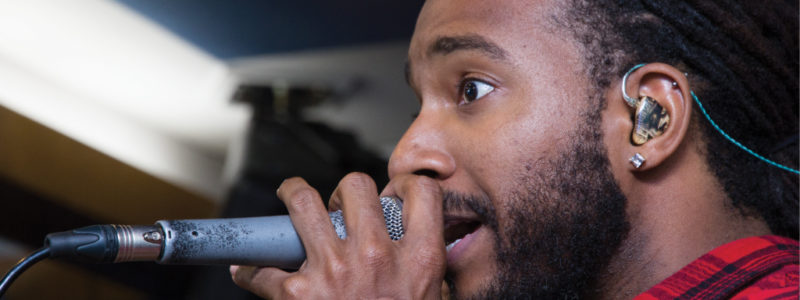Superior Sound Quality – Because in-ears fit really tightly into the ear, the seal between the in-ears and the ear canal blocks out the outside noise. It also means that the sound coming through the monitors goes directly into the ear canal, enabling you to hear more detail but crucially with less volume.
Hearing Health – It’s no surprise given they’re constantly in loud environments, but Musicians are four times more likely to deal with noise-induced hearing loss and 57% more likely to develop tinnitus. Listening to anything above 85 decibels for extended periods puts you at risk of hearing damage. In-ears block out the sound of the amplified instruments and acoustic instruments like drums, allowing you to have the mix at a lower level and protect your ears.
Individual Mixes – Because everyone is wearing their own in-ears, the sound is isolated to each performer rather than the entire stage so everyone can choose the mix of sound they want to hear. It means that if they want to, they can listen to themselves more prominently in the mix without having to up the volume. It also means that as a performer, you can add click tracks and audio cues that the audience can’t hear, for a more precise performance.
Reduced Vocal Strain – Another great benefit of being able to set your own lower levels on your mix is that it can prevent vocal strain. When singers can’t hear themselves over the band, it is instinctual for them to push to compete with the sound. In-ears allow you to listen to yourself clearly and feel less need to strain, often singing more accurately as a result and without risking vocal damage even when doing many shows in a condensed period.
Elimination of Feedback and Clean Sound For The Audience – If you’ve got speakers on stage blasting sound back at you, some of this can be picked up by your mic and amplified causing feedback. Even without the full effect of feedback, low frequencies from the wedges on stage can bleed into the audience mix, muddying the sound. With the playback directly into the performer’s ears, the audience mix is clean and leaves the sound engineer to concentrate on making it the best possible experience for both audience and musicians.
Mobility – Stage monitors both take up a lot of space and have a lot of wires. They also have directional sound, so performers will only get their mix if they are in front of their wedge. This can be a problem when singers and musicians want to move around the stage as they have to stay in specific spots to be able to hear properly as well as avoid all the stage clutter. In-ears free the stage and allow you to an excellent quality mix.
Portability and Personability – In ears are small and portable, unlike a 45-pound wedge. This means touring with them gave you a choice – either lug around a load of giant speakers and set them up each time or work with whatever the venue had but have to configure each setup differently. The portability of in-ears means that neither of these things are a problem!
Stereo Sound – In ears empower the singer to set their own mix, but also, if using stereo, adjust the balance of sounds so that one ear can have different sound levels than another. Working in stereo is a more natural way for the ears to hear, giving you the impression the instruments surround you.
_______________________
Hearing healthcare is important at any age. Schedule your appointment with Saline Audiology today.

